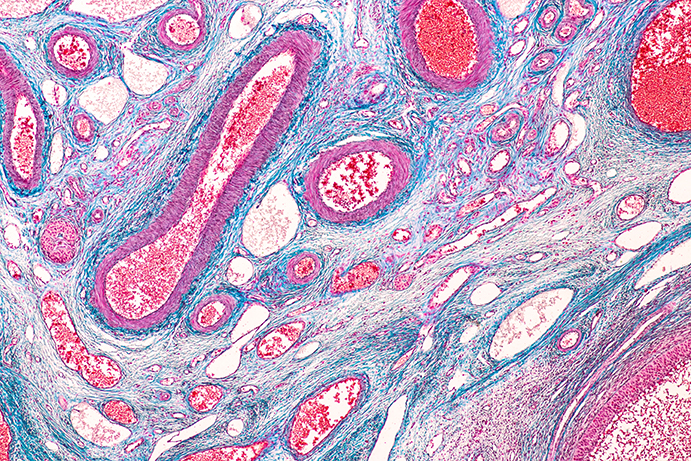In this 2018 paper, researchers studied a new targeted strategy to treat ovarian cancer.

The Trending with Impact series highlights Oncotarget publications attracting higher visibility among readers around the world online, in the news, and on social media—beyond normal readership levels. Look for future science news about the latest trending publications here, and at Oncotarget.com.
—
Sialyl-Thomsen-nouveau (STn)—a tumor stem cell-associated carbohydrate antigen—is a moiety. “Moiety” is a term used to name molecular particles identified among multiple types of molecules. STns have been found on protein markers of cancer stem cells (CSCs) in pancreatic, colon, and gastric malignancies. Researchers hypothesize that CSCs can survive adjuvant chemotherapy and are responsible for tumor resurgence in many cancers, including recurrent ovarian cancer (OvCa).
“Unfortunately, despite aggressive surgery and adjuvant chemotherapy, most women with OvCa develop recurrent disease that is ineffectively treated with current therapies. Novel treatment strategies are urgently needed to target chemoresistant disease.”
Researchers from Massachusetts General Hospital, Siamab Therapeutics, Inc., and Harvard Medical School conducted a novel research study in 2018 and authored a paper published by Oncotarget, entitled, “Treatment of ovarian cancer by targeting the tumor stem cell-associated carbohydrate antigen, Sialyl-Thomsen-nouveau.”
“Accumulating research has revealed not only the importance of CSCs in tumor initiation, metastasis, recurrence, and chemoresistance, but also the potential of CSC-directed therapies to impact patient survival.”
The Study
Researchers often use CD133 (a cell surface antigen) as a marker to detect and sequester CSCs in various solid tumors. In this study, the team analyzed the expression of STn and CD133 in ovarian cancer cell lines, their colony and sphere formation capacity, response to cytotoxic chemotherapy, and STn’s response to two targeted antibody drug conjugate (anti-STn-ADC) treatments in vivo and in vitro.
“Analyses of colony and sphere forming capacity and of response to standard-of-care cytotoxic therapy suggest a subset of OvCa STn+ cells display some CSC features.”
In a subset of human OvCa cell lines, the researchers found that STn and CD133 were co-expressed. They also found that STn+ and CD133+ cells have increased colony formation capacity and elevated levels of STn increases sphere formation. Both of the anti-STn-ADC treatments had anti-cancer effects in the OvCa cell lines in vivo and in vitro. These findings show that STn demonstrates some stem-like properties and may be a viable therapeutic target in ovarian cancer.
“In summary, STn+ cells demonstrate some stem-like properties and specific therapeutic targeting of STn in ovarian tumors may be an effective clinical strategy to eliminate both STn+ CSC and STn+ non-CSC populations.”
Conclusion
“Our finding that targeting STn+ cells in vivo with a highly specific antibody conjugated to auristatin resulted in marked decreases in tumor burden without any obvious toxicity suggests that an anti-STn ADC approach may serve as a viable option in eliminating non-CSC as well as some CSC populations.”
Click here to read the full scientific study, published by Oncotarget.
YOU MAY ALSO LIKE: More Oncotarget Videos on LabTube
—
Oncotarget is a unique platform designed to house scientific studies in a journal format that is available for anyone to read—without a paywall making access more difficult. This means information that has the potential to benefit our societies from the inside out can be shared with friends, neighbors, colleagues, and other researchers, far and wide.
For media inquiries, please contact media@impactjournals.com.



